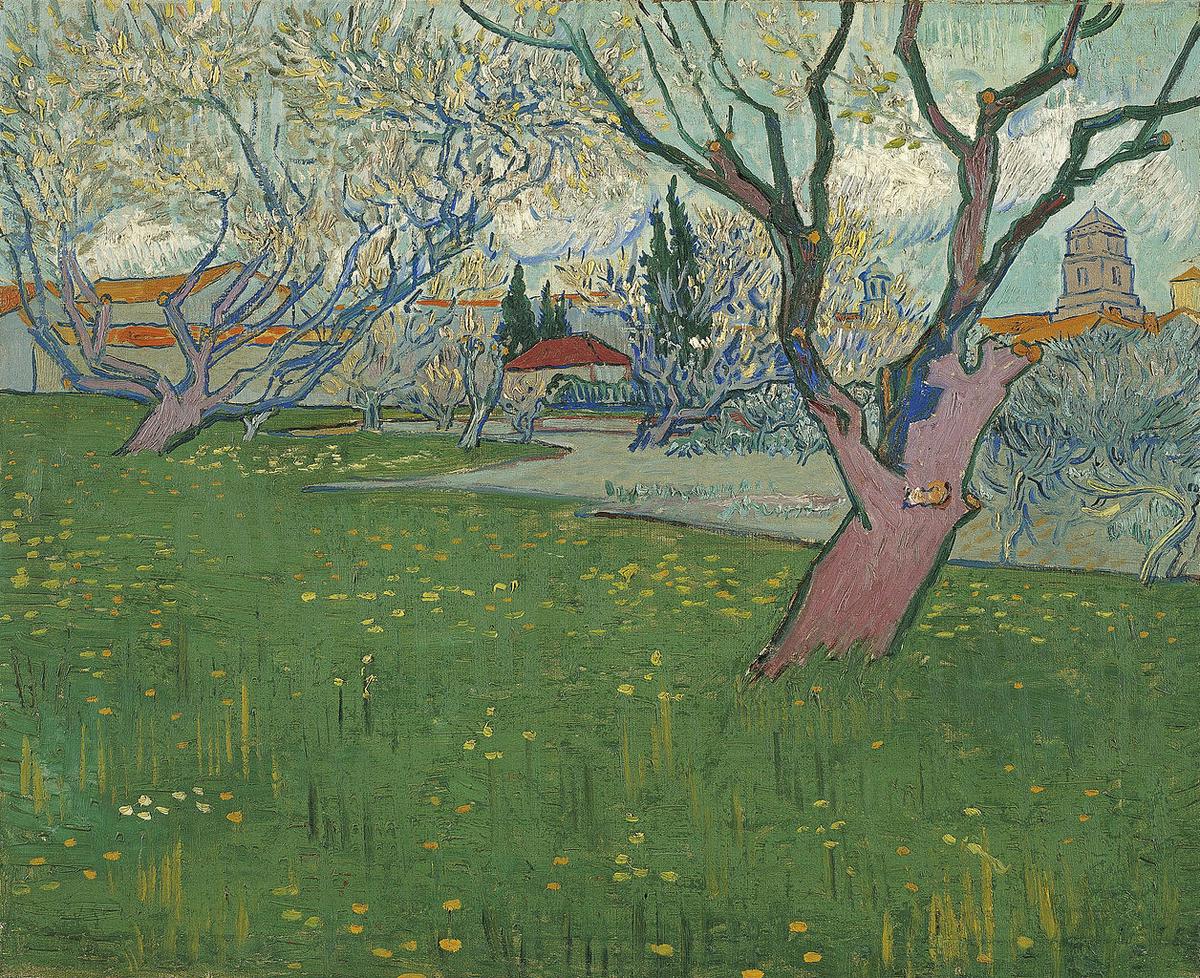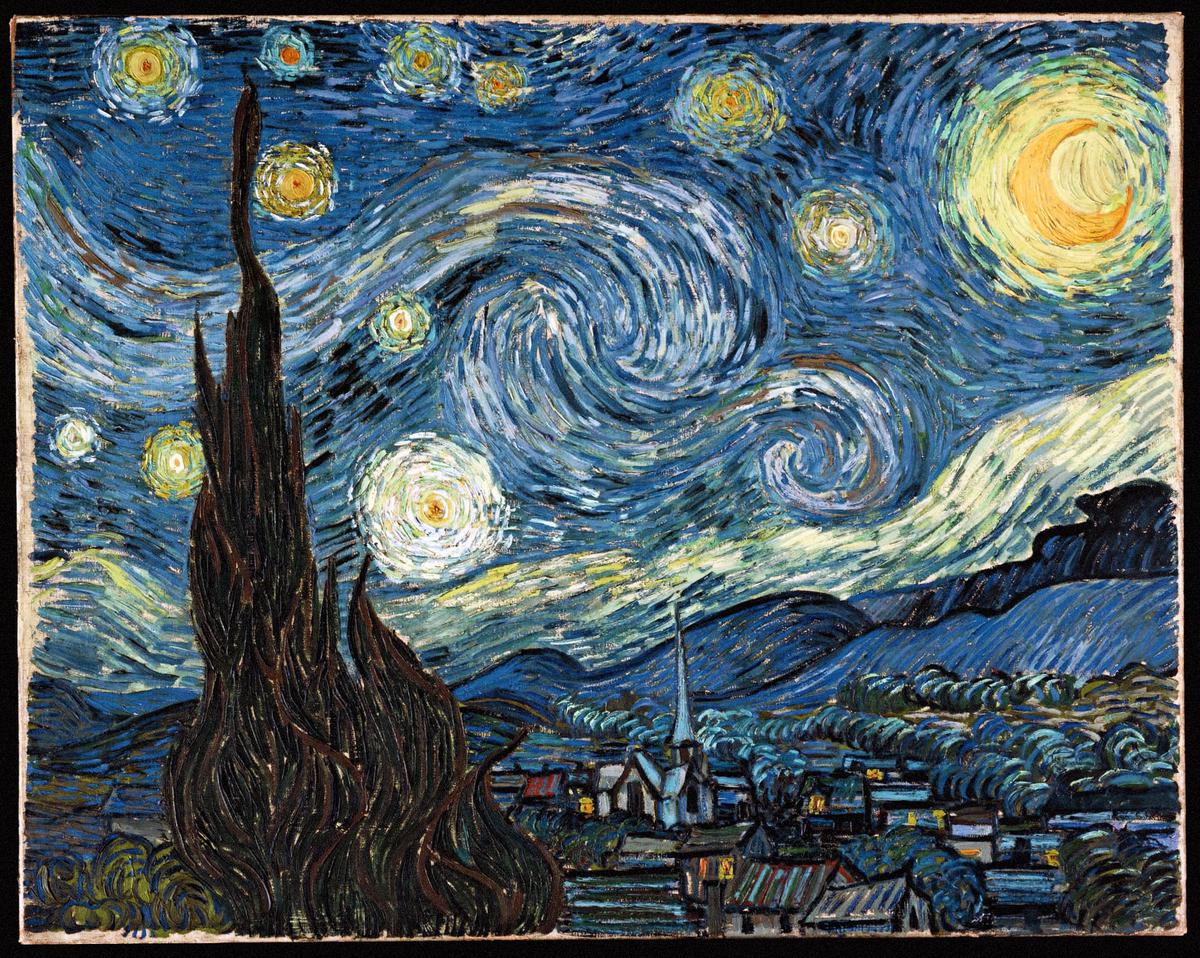Historical Context and Interpretation
When Vincent van Gogh completed 'Starry Night' in 1889, it emerged into a Post-Impressionist era challenging earlier artistic norms. The painting's swirling night sky and luminous colors stood in stark contrast to the subdued realism of Impressionism.
Initial reactions were mixed. Traditional critics found the work jarring, while others saw brilliance in its bold strokes. Van Gogh's brother Theo appreciated its boldness but worried about losing the "real sentiment of things." Even Vincent himself described it as a "study" with potential for "setback."
'Starry Night' coincided with growing public fascination in astronomy, adding depth to its early interpretations. However, major institutions like the Paris Salon were hesitant to embrace Van Gogh's avant-garde vision.
The painting's raw emotionality mirrored themes of fin de siècle Europe, where psychological introspection was becoming prevalent. Its cypress tree and swirling galaxies evoked universal themes of life, death, and the cosmos.
Today, 'Starry Night' holds iconic status at MoMA in New York, showcasing how artistic value often unfolds over time as societal perspectives evolve.

Modern Cultural Impact
'Starry Night' has transcended the art world to become a cultural icon. At MoMA, it draws crowds of admirers, while its travels to global exhibitions consistently break attendance records.
The painting's imagery graces various consumer products, introducing Van Gogh's vision to a broader audience. Its impact can be seen in:
- Posters and prints
- Puzzles and games
- Fashion items
- Digital media and apps
It has inspired creative works across media, including films, music videos, and even tattoos.
In education, 'Starry Night' features prominently in art curricula, serving as a tool to explore Post-Impressionism, emotional expression, and the connection between art and mental health.
Immersive Van Gogh experiences have emerged as a new way to engage with the artwork, allowing participants to step into a multi-sensory interpretation of the painting's world.
'Starry Night' resonates with contemporary viewers as a symbol of resilience and emotional depth. Its swirling sky offers a moment of introspection in a fast-paced world, cementing its place in our collective consciousness.
Artistic and Emotional Analysis
Van Gogh's 'Starry Night' combines innovative composition, color palette, and brushwork to evoke profound emotional responses.
The swirling night sky guides the viewer's eye, while the cypress tree grounds the composition. This balance between chaos and serenity reflects the internal turmoil one might feel amid outward calm.
Color Palette:
- Dominant: Cool blues and purples
- Accents: Vibrant yellows and whites
This interplay creates a dynamic visual experience, infusing the scene with both tranquility and energy.
Van Gogh's thick, impasto brushstrokes add texture and movement, making the sky appear alive. This technique mirrors the artist's emotional state, allowing viewers to almost feel the energy he poured into the painting.
Painted during Van Gogh's stay at an asylum, 'Starry Night' resonates with themes of despair, hope, and the search for peace. The cypress tree is often interpreted as a symbol of mortality, while the luminous stars offer a beacon of hope.
The painting captures the essence of a soul in conflict, yearning for connection yet engulfed by isolation. It invites us to appreciate its beauty while exploring the deeper emotional currents beneath its surface.
Public and Critical Controversies
'Starry Night' has sparked diverse debates since its creation. Early critics questioned whether Van Gogh's bold style enhanced or detracted from the painting's value, while others saw it as revolutionary.
Interpretations of the painting's meaning continue to vary. Some view it as a reflection of Van Gogh's mental turmoil, while others see it as an optimistic portrayal of hope and cosmic grandeur. The cypress tree, in particular, has been a focal point for these discussions.
"The cypress is always occupying my thoughts. It's as beautiful of line and proportion as an Egyptian obelisk."1 – Vincent van Gogh
Van Gogh's psychological state during the painting's creation fuels ongoing discourse. Some argue that the turbulent sky represents his disoriented mind, while others emphasize the structured nature of his technique as evidence of artistic control.
Various critical frameworks have been applied to analyze 'Starry Night,' from formalism to psychoanalytic theory. These diverse approaches have enriched our understanding of the painting's complexity.
In the postmodern era, debates have emerged about the painting's commodification and its presence in popular culture. Some critics view this as diluting Van Gogh's message, while others see it as democratizing access to his work.
These ongoing controversies illustrate the rich array of interpretations that great art evokes, contributing to our understanding of Van Gogh's complex legacy.

In essence, 'Starry Night' remains a testament to Vincent van Gogh's artistic journey. Its lasting impact lies in its visual appeal and emotional resonance, inviting us to reflect on our own experiences and bridging the gap between past and present, art and emotion.
- Van Gogh V. Letter to Theo van Gogh. Written 25 June 1889 in Saint-Rémy-de-Provence. Van Gogh Museum, Amsterdam.






















